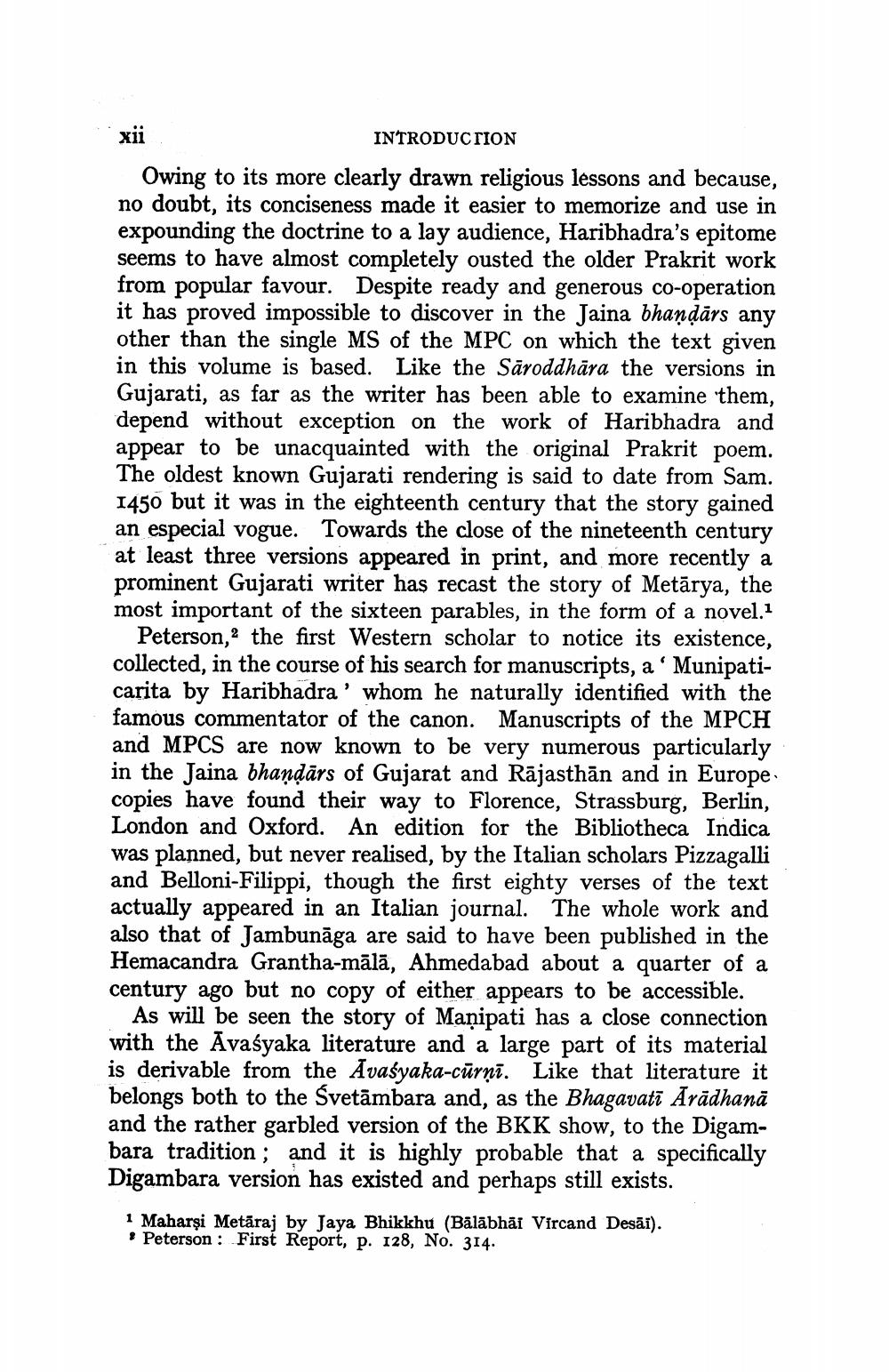________________
xii
INTRODUCTION
Owing to its more clearly drawn religious lessons and because, no doubt, its conciseness made it easier to memorize and use in expounding the doctrine to a lay audience, Haribhadra's epitome seems to have almost completely ousted the older Prakrit work from popular favour. Despite ready and generous co-operation it has proved impossible to discover in the Jaina bhaṇḍārs any other than the single MS of the MPC on which the text given in this volume is based. Like the Saroddhära the versions in Gujarati, as far as the writer has been able to examine them, depend without exception on the work of Haribhadra and appear to be unacquainted with the original Prakrit poem. The oldest known Gujarati rendering is said to date from Sam. 1450 but it was in the eighteenth century that the story gained an especial vogue. Towards the close of the nineteenth century at least three versions appeared in print, and more recently a prominent Gujarati writer has recast the story of Metarya, the most important of the sixteen parables, in the form of a novel.1
Peterson, the first Western scholar to notice its existence, collected, in the course of his search for manuscripts, a' Munipaticarita by Haribhadra' whom he naturally identified with the famous commentator of the canon. Manuscripts of the MPCH and MPCS are now known to be very numerous particularly in the Jaina bhaṇḍārs of Gujarat and Rājasthan and in Europe copies have found their way to Florence, Strassburg, Berlin, London and Oxford. An edition for the Bibliotheca Indica was planned, but never realised, by the Italian scholars Pizzagalli and Belloni-Filippi, though the first eighty verses of the text actually appeared in an Italian journal. The whole work and also that of Jambunaga are said to have been published in the Hemacandra Grantha-mālā, Ahmedabad about a quarter of a century ago but no copy of either appears to be accessible.
As will be seen the story of Manipati has a close connection with the Avaśyaka literature and a large part of its material is derivable from the Avasyaka-curṇī. Like that literature it belongs both to the Svetambara and, as the Bhagavatī Ārādhanā and the rather garbled version of the BKK show, to the Digambara tradition; and it is highly probable that a specifically Digambara version has existed and perhaps still exists.
1 Maharşi Metāraj by Jaya Bhikkhu (Bālābhāi Vircand Desai). Peterson: First Report, p. 128, No. 314.




